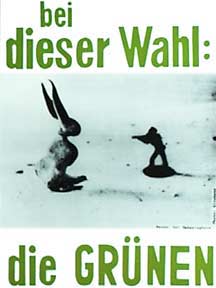LACMA: Broad, Beuys, & BP
Eli Broad is ranked by FORBES as number 42 on its list of 400 richest Americans, with an estimated net worth of over $5.8 billion dollars. Touted as a philanthropist interested in raising the cultural profile of Los Angeles, Mr. Broad, whose name rhymes with “load,” has been busy putting his stamp on L.A. He was the founding chairman of the Museum of Contemporary Art (MOCA) and is currently a powerful trustee of the Los Angeles County Museum of Art (LACMA), where his $60 million “gift” will build The Broad Contemporary Art Museum to house his massive collection of modern art.
The Broad Art Foundation has made known its unparalleled acquisition of 570 artworks by German artist, Joseph Beuys (pronounced “boyz”). The huge collection was procured for an undisclosed sum, and comprises the most complete body of work by the deceased artist now held in the United States. Eli Broad said of his purchase, “We consider this an opportunity to make a real difference in Los Angeles’ emergence as a world capital for contemporary art. An artist as significant as Beuys should be strongly represented here.”
LACMA’s director, Michael Govan, has promised that the works of Beuys will be placed on exhibit when the museum unveils its new multi-million dollar facilities in early February, 2008. Govan said “Beuys is one of the most important artists of the post-war era,” and “therefore ideal to present at the opening of LACMA’s Broad Contemporary Art Museum.”
I must admit that I’m not a devotee of German conceptual artist Joseph Beuys (1921-1986). He is credited by enthusiasts of postmodernism as one of the most influential figures in contemporary art, but to me his performances or “actions” as he called them, were obscurantist affairs at best, and his installation works were equally baffling. For example, in his infamous 1965 performance/action, How To Explain Paintings to a Dead Hare, Beuys covered his head in honey and gold leaf and moped before a live audience while carrying a dead hare through an exhibit of pictures, all the while talking to the lifeless animal. This doesn’t sound revolutionary to me, but it does sound frivolous.
Unlike many of today’s conceptualists, Beuys believed in art as a catalyst for “revolutionary change.” This dedication to a transformative social art was a primary force behind the artist’s performances and artistic activities. In his 1973 statement, Art into Society, Society into Art, Beuys wrote;
“Only on condition of a radical widening of definitions will it be possible for art and activities related to art, to provide evidence that art is now the only evolutionary-revolutionary power. Only art is capable of dismantling the repressive effects of a senile social system that continues to totter along the deathline: to dismantle in order to build ‘A Social Organism as a work of art’… every human being is an artist, who – from his state of freedom – the position of freedom that he experiences at first-hand – learns to determine the other positions of the total art work of the future social order.”
In 1979 his intense interest in radical social democracy led Beuys to found the Green Party along with Petra Kelly and Heinrich Böll. That same year Beuys ran for election as a Green Party European Parliament candidate, an election that the left-wing environmentalist party failed to win. In 1980 Beuys was the leading candidate for the Greens in North Rhine-Westphalia, but again the party failed to get enough votes to enter parliament.
Those setbacks notwithstanding, Beuys continued to support the Green Party and the vision of a “free democratic socialism.” In 1982 Beuys began his 7000 Oaks project for the Documenta 7 international art exhibition in Kassel, Germany. The endeavor involved the planting of seven thousand trees across the city of Kassel, a deed aimed at implementing social and environmental change. Beuys fervently believed in art as the key to creating a better world, and he viewed society itself as a constantly evolving work of art where everyone played a creative role, hence his famous statement, “Everyone is an artist.” Sorry to say, but… not everyone is an artist.

You just have to marvel over the contradiction of an elite art institution flaunting the artworks of an anti-capitalist, radical environmentalist artist. Beuys once said, “We do not need all that we are meant to buy today to satisfy profit-based private capitalism.” Once the new LACMA opens in 2008, in order to see the Beuys collection in The Broad Contemporary Art Museum, you’ll have to pay the high ticket price then walk through that damned BP Grand Entrance pavilion constructed with the $25 million the oil company gave LACMA.
It’s not difficult to imagine what the former Green Party candidate and pseudo-revolutionary would think of this folly, and what he might do if still alive today. In 1985, just a year before his death, Beuys wrote the words that should be emblazoned on the walls of the BP pavilion;
“Art that cannot shape society and therefore also can not penetrate the heart questions of society, and in the end influence the question of capital, is no art.”

